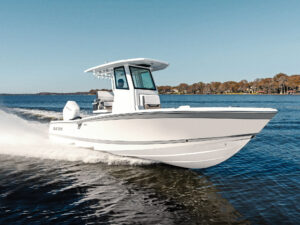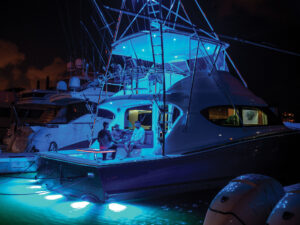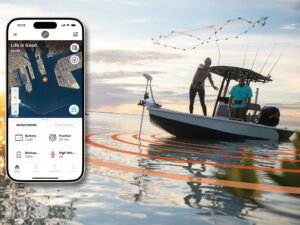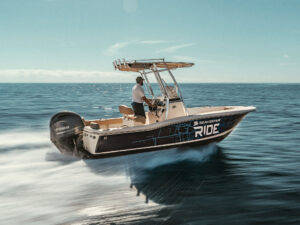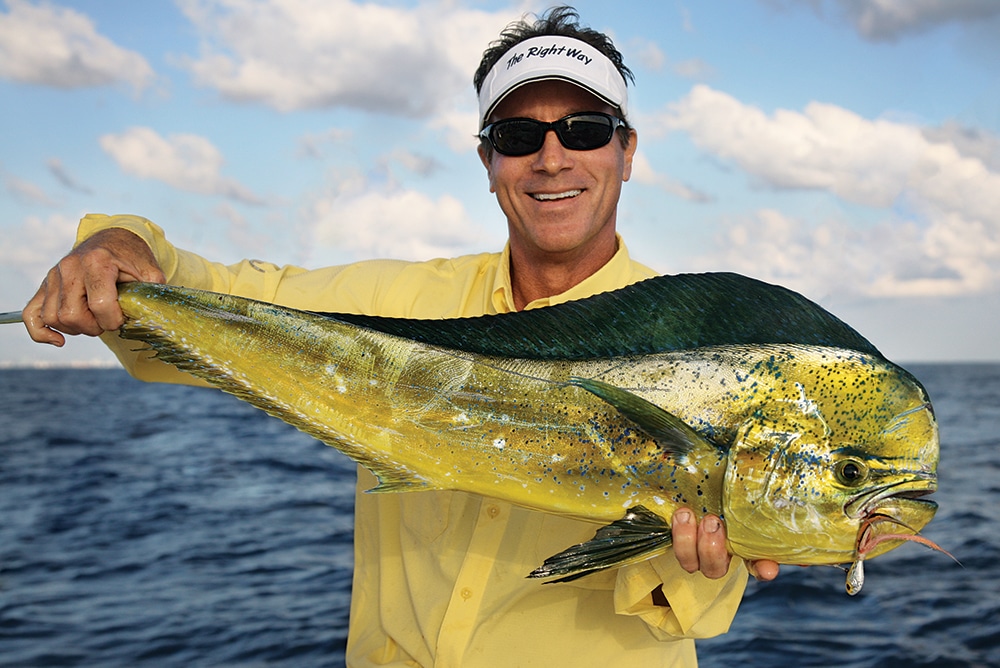
“Anglers who troll aboard small and midsize outboard-powered boats now realize what the big-boat guys have known for decades: Dredges raise fish!” says Harry Vernon III, of Capt. Harry’s Fishing Supply in Miami, an ardent offshore angler.
“Dredge” is the generic name for a spread of subsurface teasers pulled off the transom, clear-vinyl strips emblazoned with reflective fish decals, or a school of hookless artificials creating a virtual ball of bait. I’ve been pulling a pair of dredges behind my center console for years. I’ve had fish come right to the teasers, where we’ve baited and hooked them either on a pitch bait or flat line.
Pulling dredges behind small or midsize boats with a one- or two-person crew is challenging, but well worth the effort. And despite what some newcomers to dredge trolling might think, there’s way more to the tactic than just picking a dredge and towing it behind your boat.
Dredge Teaser Options
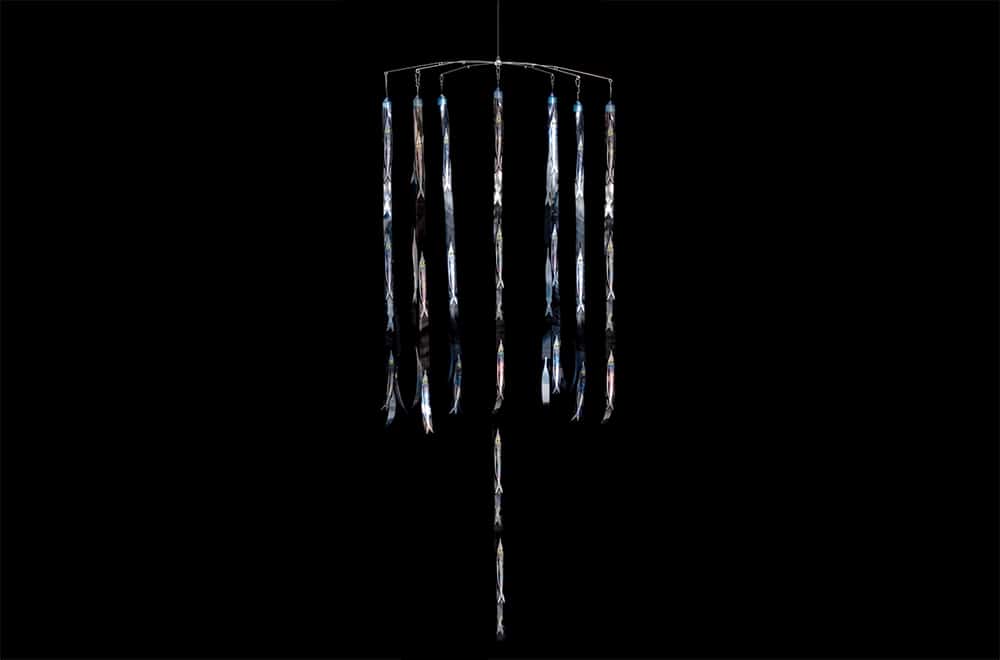
Numerous manufacturers offer a range of styles and sizes of teasers. When selecting one, or a few, think in terms of colors and sizes of teasers that will best attract the fish you seek. I’ve been pulling two dredges regularly — one from each transom corner — clear, durable strips with holographic baitfish images (choices include squid, ballyhoo or sardine-like baits) affixed to them. When deployed about 20 feet back and several feet deep, they light up the water behind my boat, like two large schools of baitfish undulating in a tight ball. When I’m seeking dolphin offshore, I tend towards sardine-like images, which I feel mimic flyingfish, a key forage of dolphin.
Strike Point, another company in this market, offers double-laminated holographic fish strips (ballyhoo or sardine), along with steel and titanium collapsible dredge bars. The images come in blue, pink or silver, and in models ranging from 28 to 156 fish images.
In addition, Strike Point offers streamlined trolling skirts and lures in various sizes, colors, and combinations to help “dial in the tease” when predators are selectively feeding on a specific bait. For example, flyingfish, bullet bonito or chicken dolphin. A number of other companies also offer fine-tuning options such as plastic mullet, mackerel, squid and flyingfish.
Best Positions for Dredges
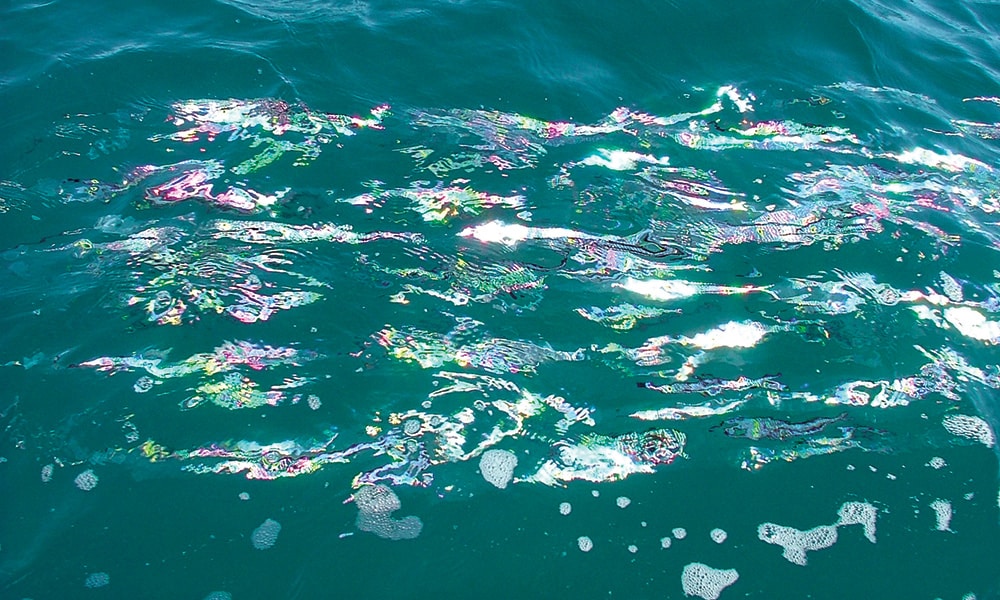
Large boats with towers have a great advantage, because their dredges can be deployed farther back and deeper, while still remaining in view from the bridge or tower. Many small and midsize vessels lack that benefit.
The technique, sans tower, is to position the dredges as far back as you can and still see them; the objective is spotting fish coming up on them, and being able to quickly adjust a flat-line bait or pitch out another bait while the fish is on the dredge.
On my boat, I position the dredges 20 or so feet back, and five to 10 feet down; they’re back and deep enough so they’re not in heavy prop wash. I believe that some prop wash helps attract fish, perhaps lending the illusion of a feeding frenzy. So when you factor in the dredges just behind and below that commotion, my surface teasers (i.e., spreader bars and/or daisy chains) in clean water to the outside of the prop wash and dredges, and a full spread of baits, it’s easy to understand how fish are coaxed in for a closer look.
Sometimes dredges become anemic, like when game fish go on selective feeds. This is where sharp dredge trollers make critical adjustments, and deploy teasers that mimic the size and style of the abundant forage fish. If dolphin, tuna or sailfish are feeding on small flyingfish, you’ll likely raise more with dredges sporting small, plastic flyingfish, streamlined trolling lures in the size and colors of those flyingfish, and sardinelike holographic images. The same strategy applies with sailfish in close and when ballyhoo are schooling heavily, and marlin and even wahoo when bonito, skipjacks, and small tuna are abundant.
Rapid Deployment
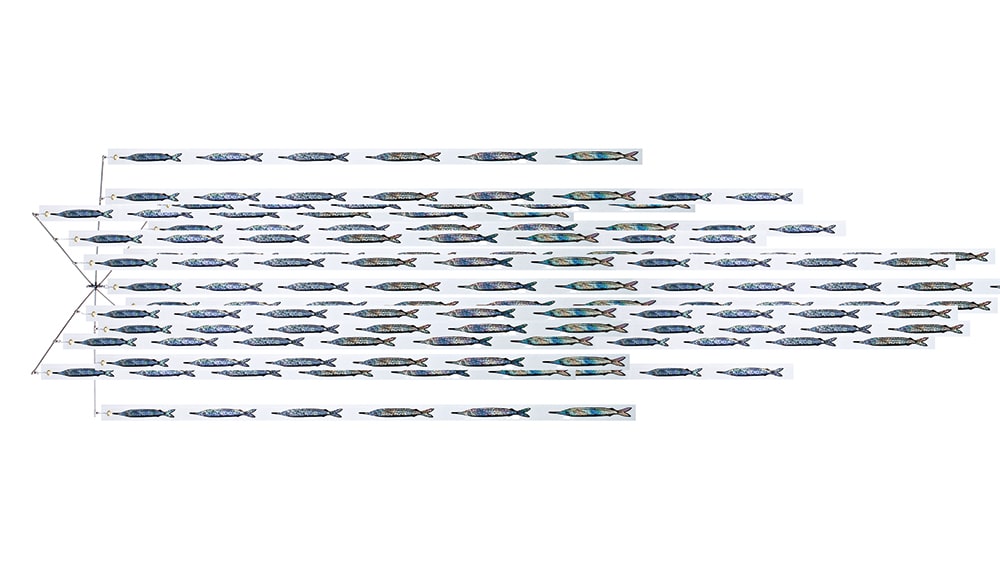
A trolling sinker typically escorts a dredge into the depths, its exact weight hinging on preferred depth placement and trolling speed. An easier setup for small and midsize boats is to replace the trolling sinker with a large-lipped, hookless trolling plug. This not only takes the dredge into the depths, but it’s easier to handle, and easier on the gelcoat and deck than a heavy trolling sinker.
Rigged with a Mann’s Stretch 40, or Rapala X-Rap deep-diving plug, the dredge can attain a depth well beyond sight. Before deploying the system, tie off the end the dredge line (roughly 30 to 40 feet of 400-pound-test monofilament) to a transom cleat; tying in a three-foot section of nylon rope at the end of that line makes for easy handling. Next, put the boat in neutral, lay the dredge and swimming plug in the water, put the boat back in gear, and maintain a slow crawl until the dredge is in position. Then cleat the line, and resume trolling speed.
The drag created by the dredge can make handling it at normal trolling speeds dangerous, hence deploying it at a slow clip. When retrieving the dredge to fight a fish or head back in, you’ll need to break its drag by shifting into neutral.
With the dredge far enough back and still in view, deploy a second dredge from the opposite transom corner. From there, strategically position flat-line baits at the surface, or just beneath and a few feet beyond the dredge. This creates the illusion of a baitfish that has fallen behind the school — an easy mark for game fish.
Pitch Baits near the Dredge
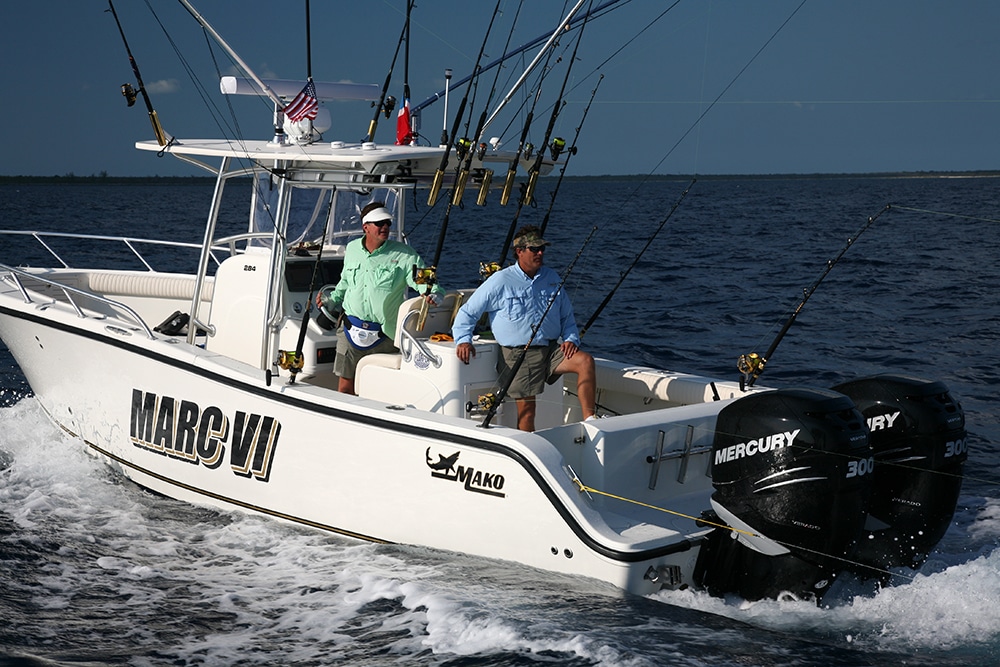
Dredges and pitch baits go hand in hand. Keep two outfits, one heavy and one light, ready to take advantage of whatever comes up on the dredge. For example, a 30- or 50-pound outfit with a large bait (horse ballyhoo, mackerel, mullet) will take care of blue marlin, whereas a 20-pound spinning outfit with a small ballyhoo will handle sailfish, white marlin and dolphin.
Don’t neglect the role of the flat lines. On several occasions, I’ve seen big dolphin come up on the dredge while ignoring the flat-line baits. To score, we had to reel up those flat lines, aim the rod tip at the water, and free-spool the baits so the baits drifted just beyond the dredge. In every instance, those baits were devoured.
Rig the Swimming Plug with a Dredge
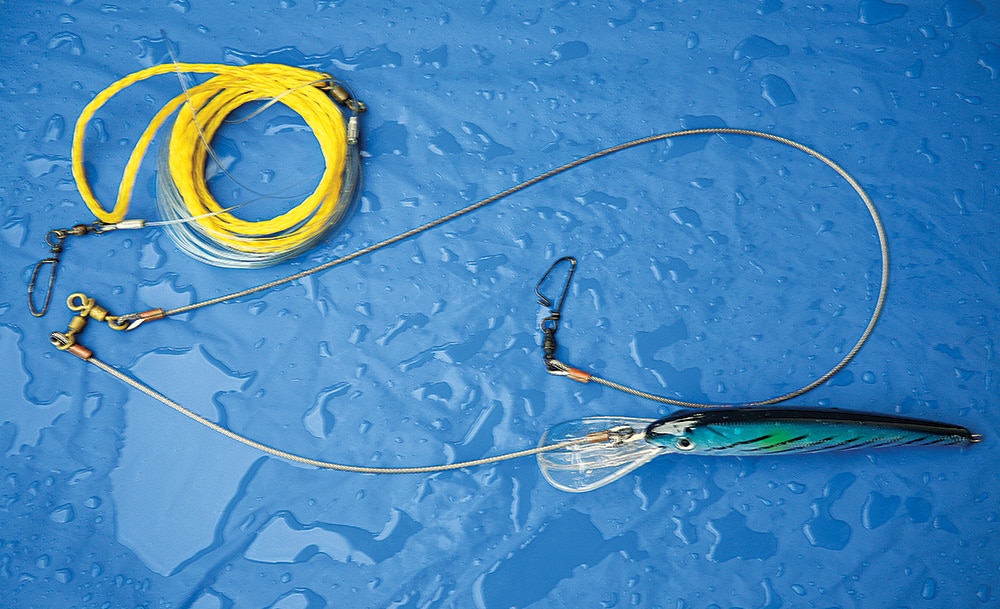
The dredge and swimming plug will ride independently of each other, with the dredge swimming behind the plug. This setup leaves the plug free to swim, dig in and run deep. What’s more, the plug swimming in front of the dredge acts as yet another teaser, providing a more realistic illusion than a trolling sinker.
Select a long-lipped, deep-diving plug, such as the Mann’s Stretch 30 and 40, or Rapala’s X-RAP Magnum 30, and remove the hooks.
Secure the plug to 20 inches of heavy cable crimped around a thimble to the split ring or eye of the plug.
Crimp the opposite end of the cable onto one eye of a 500-pound-test, three-way swivel.
Attach the 300-pound-test ball-bearing snap swivel on the dredge line to the eye adjacent to the one carrying the swimming plug.
Secure a 30-inch length of cable to the third eye, and crimp another 300-pound ball-bearing snap swivel to its opposite end, and fasten this to the dredge.

